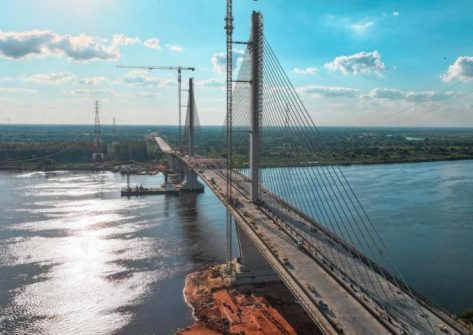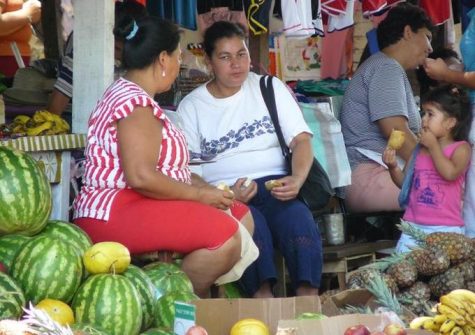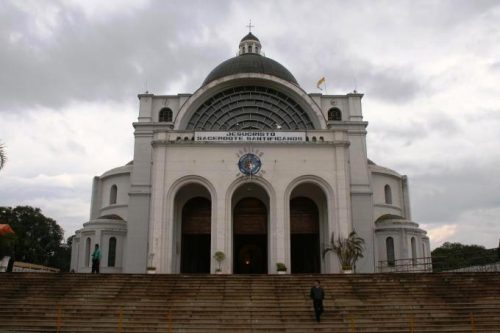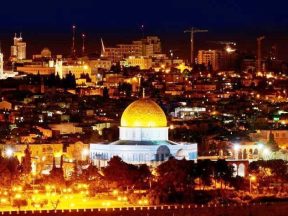Cultural and Ethnic Diversity.

The country has a population of 7,353,000 inhabitants, with a population density of approximately 16 people per km2, of whom 56% live in urban areas.
The distribution on the territory is uneven because only a small percentage, around 3% of the Paraguayan population, which is largely mestizo and descended from Spaniards and indigenous people, live in the Chaco. The remaining part live east of the river and, in particular, around the capital Asunción which is home to around 500,000 inhabitants.Asunción is the industrial and cultural centre of the country, the seat of the government, as well as the main river port. In addition to Asunción, the other large urban centre is Ciudad del Este, known internationally as the commercial centre of the Triple Frontier, an area known for its flourishing illegal and criminal activities.

Héroes del Chaco Bridge over the Paraguay River, which connects Asunción with Nueva Asunción. CC BY-SA 4.0/ Overkill53
Approximately 332,000 inhabitants of different ethnic groups and nationalities live in Ciudad del Este, where the main community is that of the Lebanese Shiites, but there is also a large presence of Chinese, Taiwanese, Korean, Syrian, and Palestinian immigrants. Ciudad del Este is a new city that originated in 1957 when it was founded with the name of Puerto Flor de Lis. Its foundation was part of a broader and planned march towards the east by Alfredo Stroessner who intended to give life to this agglomeration for the future construction of a bridge towards the Brazilian city of Foz do Iguacu. Its name was subsequently changed to Puerto Presidente Stroessner and then definitively changed in 1989 into Ciudad del Este. The centre is a labyrinthine agglomeration of thousands of small shops where it is possible to shop at very convenient prices since imported products are tax-free and among the various merchandise, electronic and IT products stand out.
The city centre in which these activities are developed has been defined as one of the most important international commercial centres, on a par with Miami and Hong Kong.

Paraguari market. Fruit vendor. Approximately 50% of the population speaks only Guarani. Photo: Hugo Diaz Lavigne
From the point of view of culture and identity, Paraguay is one of the few Latin American realities in which the identity of the people has been well preserved. This conservation could have depended, as some scholars maintain, on the geography that limited contamination, while for others, including Maria Gabriella Dionisi, it is a derivative of the historical events that have, in addition, conditioned the reality of the country by generating an identity of the defence of their myths and their own culture, against any form of colonization.
According to the scholar, these events would have favoured that vital push aimed at decisively safeguarding ethnicity, language, and culture, despite the continuous attempts at cultural homologation made by both Europe and the United States over the last two centuries. Perhaps it is no coincidence that approximately 50% of the population speak only Guarani, 43% are bilingual and the remainder 7% speak only Spanish.
Guaranì was recognized as a national language together with Spanish by Alfredo Stroessner in 1967 and taught in the schools starting from 1994. Today it is used as a domestic language, unlike Spanish which is also used in working and commercial life. In addition to the two main languages spoken according to the aforementioned percentages, which are merely indicative, it should be added that 15 indigenous languages and dialects whose diffusion is limited are spoken in the country.

Asunción. National Shrine Our Lady of Caacupe. About 90% of the population profess to be Catholics. File swm
The trait of homogeneity also presents itself from a religious and ethnic point of view, with 90% of the inhabitants professing the Catholic religion. The ethnic aspect, in particular, distinguishes Paraguay as the most homogeneous country in the whole of South America.
Approximately 90% of the population is made up of mestizos (Spanish and Guarani), 2% of Amerindians, 1.7% of Germans, and 4.5% is made up of other ethnic groups including the Korean community. The indigenous groups are divided among 19 ethnic groups which are grouped into five linguistic families. Among these, the Ayoreo indigenous people, located in the Paraguayan Gran Chaco, are at risk of extinction due to the deforestation of their ancestral territories, carried out by multinationals and global finance giants.
According to organizations aimed at protecting indigenous communities, including Global Forest Watch, one of the largest deforestation processes on the planet is under way in the Paraguayan Gran Chaco. It would seem that in the twenty years 2001 – 2021, Paraguay has lost 32% of the tropical forest present in its territory and the situation is further worsening with the works for the construction of the intercontinental Bi-Oceanic Corridor (in the departments of Alto Paraguay and Boquerón and which also involves the construction of underground canals and bridges), which has resulted in further deforestation in the Paraguayan Gran Chaco. (Open Photo: Shutterstock /Daniel M Ernst)
F.R.



